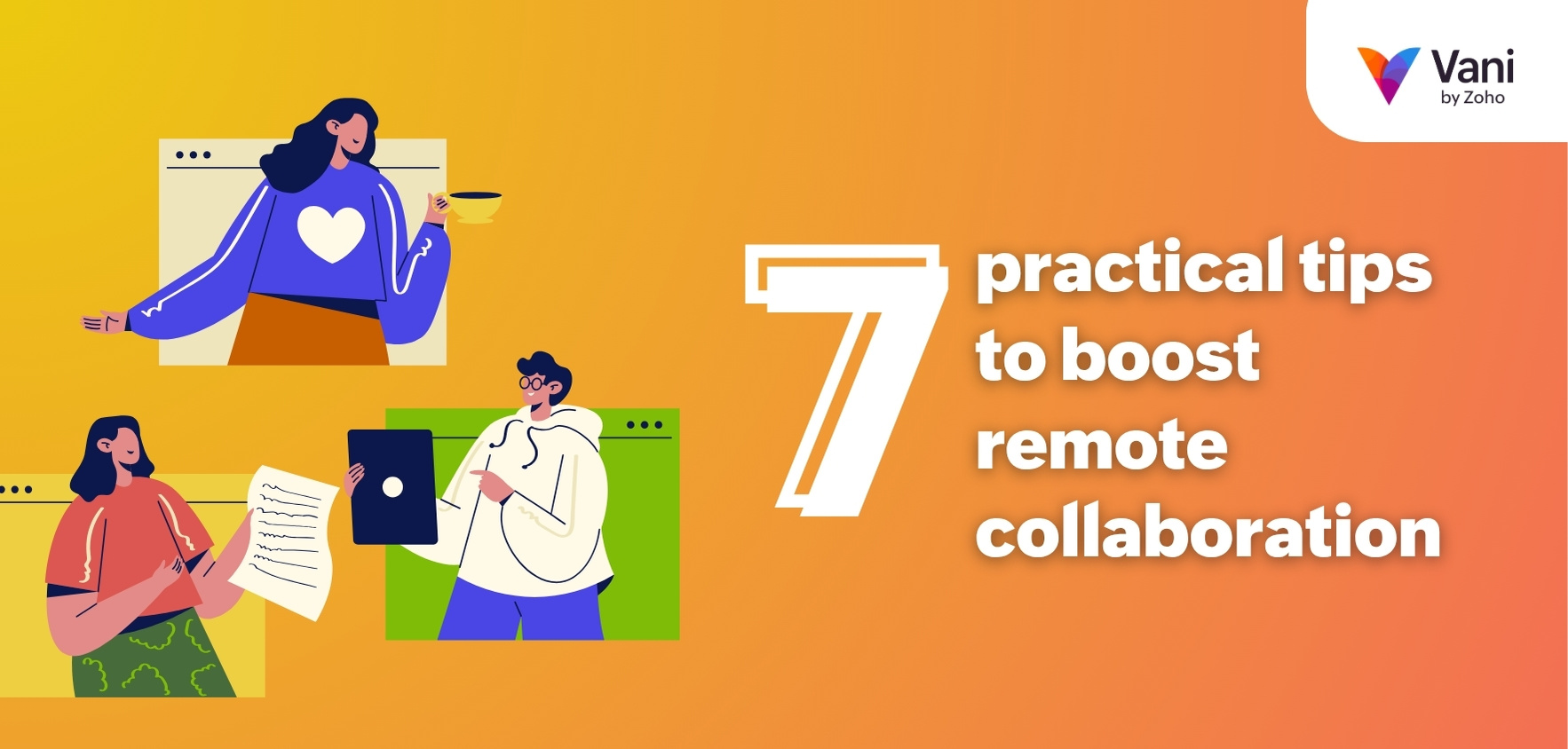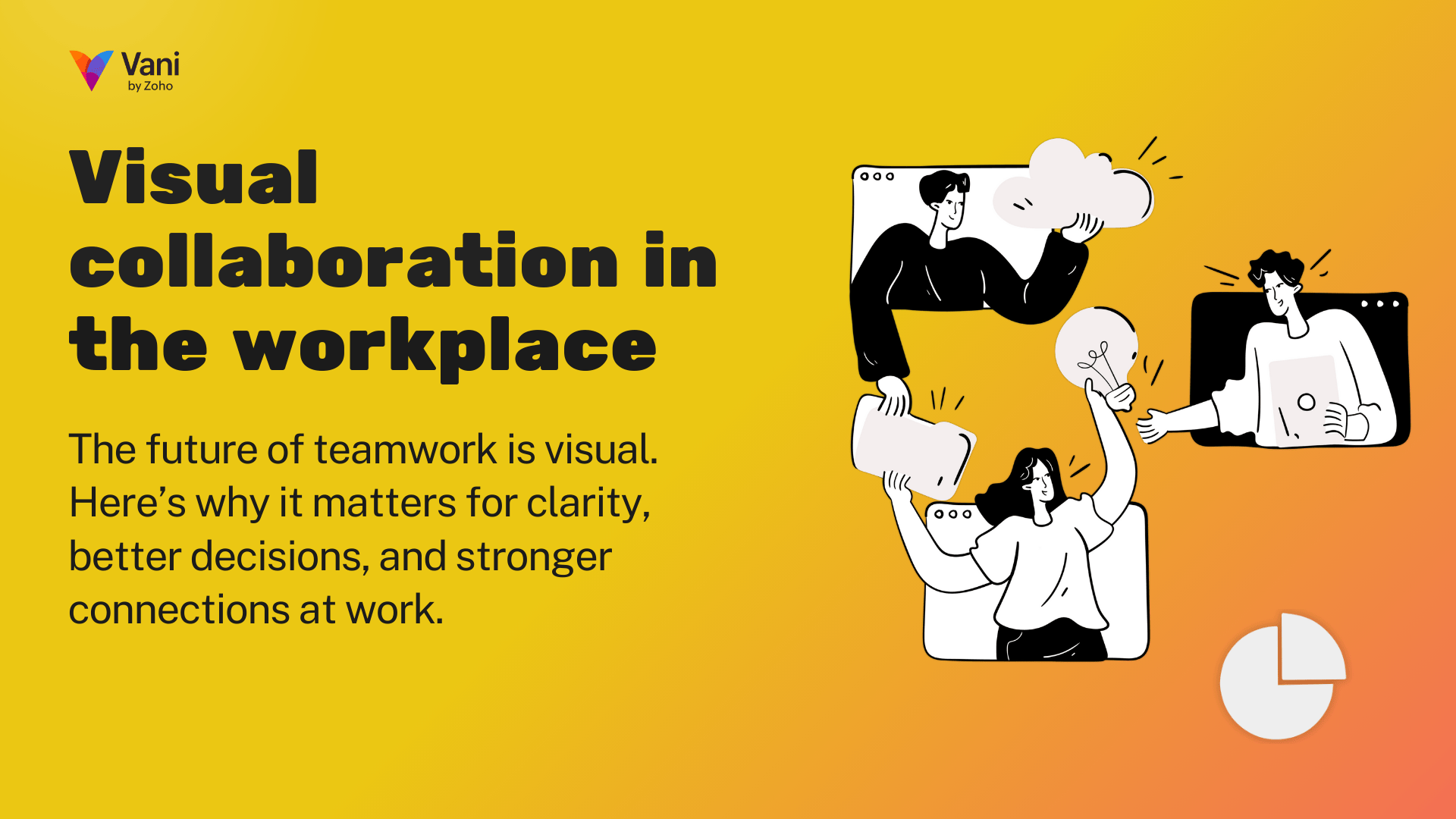- HOME
- Work culture
- Brainstorming 101: Steps, techniques, and benefits for effective idea generation
Brainstorming 101: Steps, techniques, and benefits for effective idea generation
- Last Updated : September 30, 2025
- 17 Views
- 6 Min Read
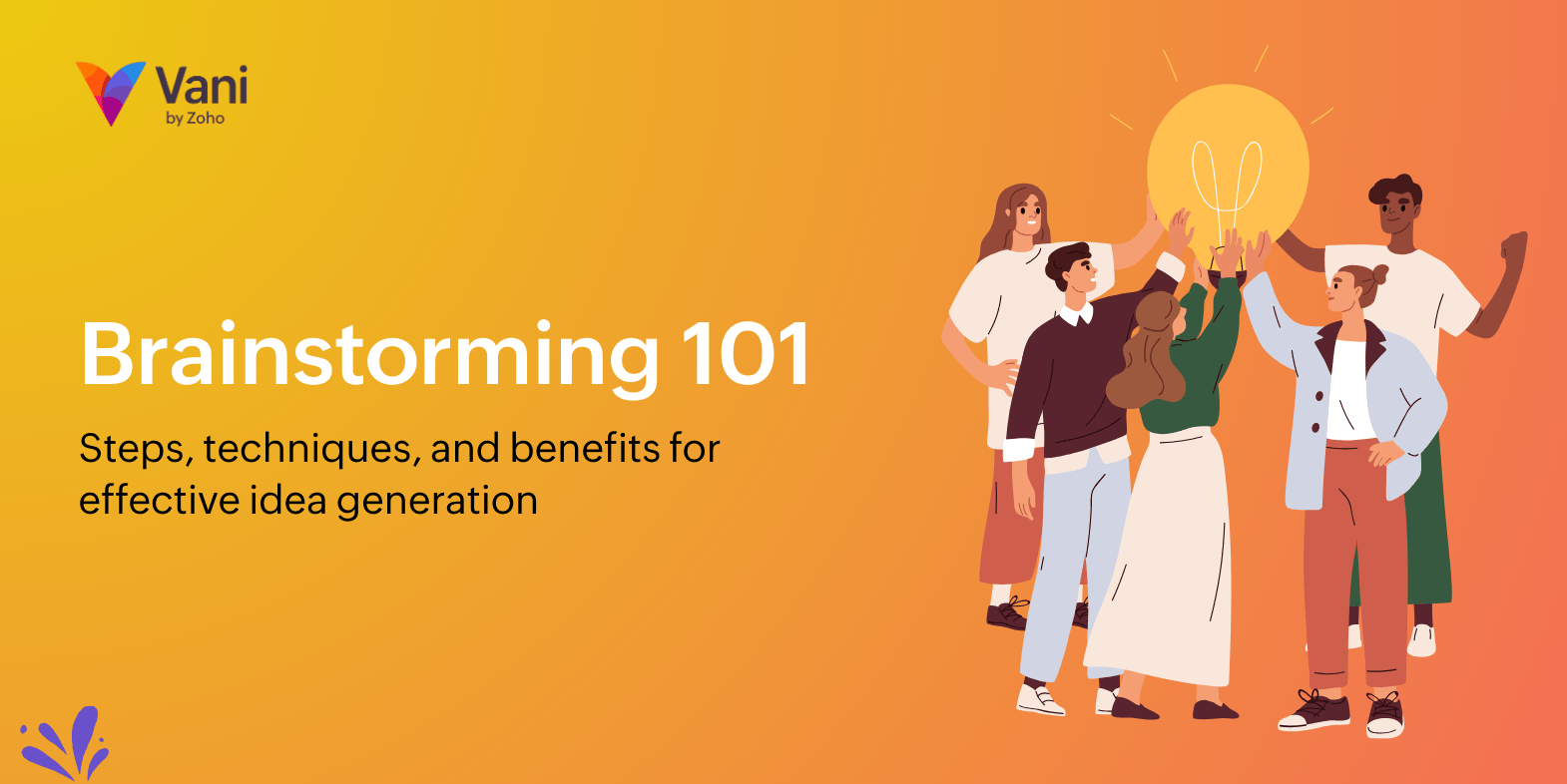
Stuck with a client project idea? A plan for your next marketing campaign? Or that plan for your upcoming product launch? Think about what usually happens: One idea sparks another, and before you know it, a stream of thoughts starts to flow. You jot them down on paper, doodle it on a notepad, or sketch the design, bringing it into focus. And just like that, it all comes together.
We’ve all had moments like this, whether it’s solving a work challenge, planning an event, or fixing something at home. This rush of ideas isn’t just luck. Back in the 1940s, advertising executive Alex Osborn saw the same thing happen in his creative teams. He called it “brainstorming,” a process built to let the imagination run free, gather as many ideas as possible, and turn them into solutions.
What is brainstorming?
Brainstorming is the process of generating ideas or solutions for a problem. It encourages open discussions that lead to a wide range of potential next steps, processes, or solutions for any given topic or challenge.
An ideal brainstorming session fosters creativity, welcomes all perspectives, and focuses on the available options before narrowing down the best possible option. It need not be limited to a specific group size; it can happen in large or small groups and can be an individual activity too.
Core principles of brainstorming
It is important to understand certain core principles of brainstorming to keep your brainstorming sessions successful, whether it is alone or as part of a group.
- Focus on generating as many ideas as possible rather than worrying about whether they are perfect.
- Hold off on criticizing or judging ideas during the brainstorming phase to keep creativity flowing.
- Embrace bold, unusual, or even wild ideas; they can lead to innovative solutions.
- Build on the ideas shared by others to create stronger, more developed concepts.
- Keep the discussion centered on the main topic to avoid losing focus.
- Make sure everyone has a chance to share their thoughts and contribute equally.
- Write down every idea, no matter how small or rough, so nothing gets lost.
Brainstorming techniques
While brainstorming can be the free flowing of ideas, the right technique can make the process more focused and productive. Let's explore the different brainstorming techniques.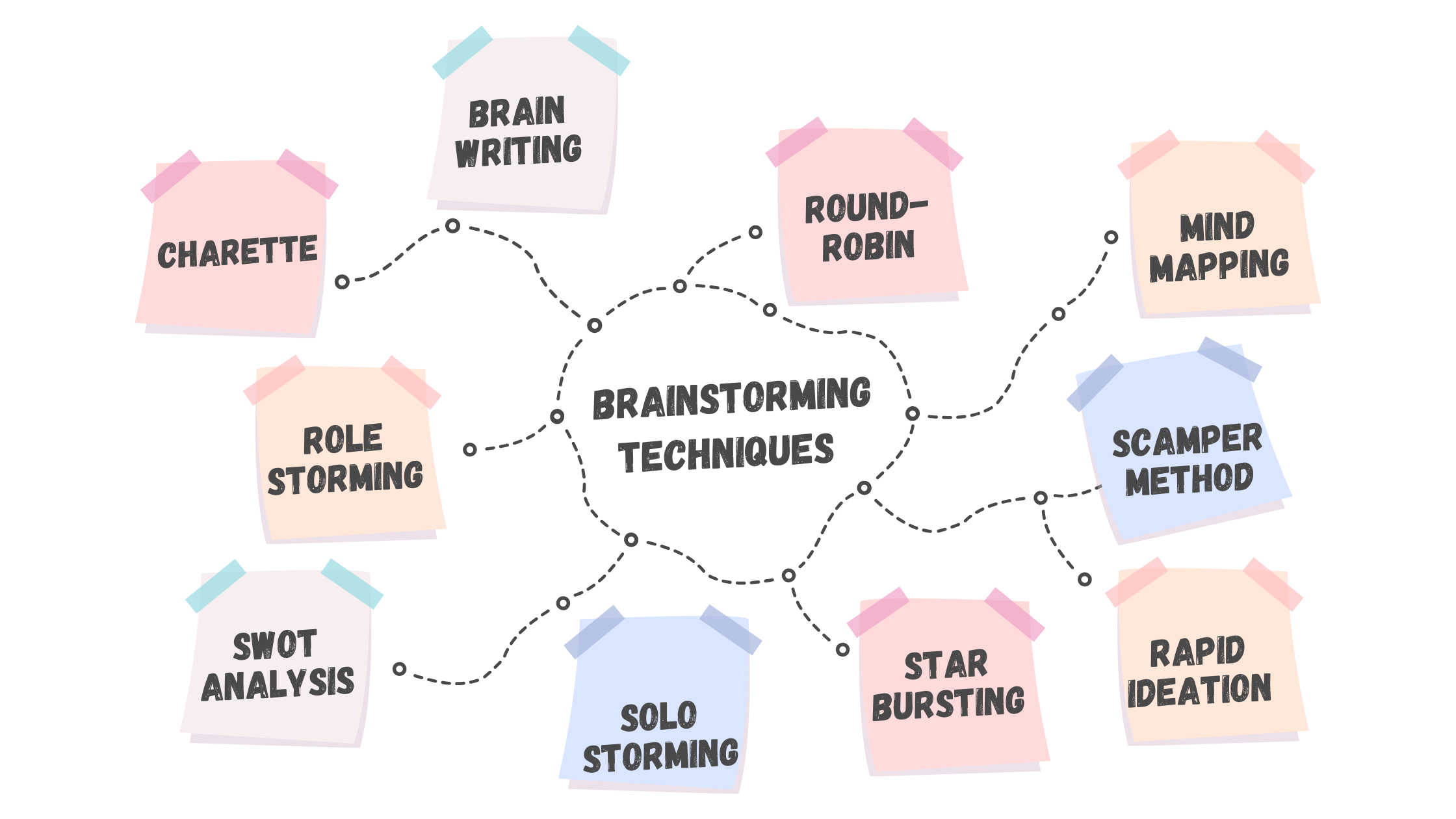
Mind mapping: Start with a core idea and branch out to other related thoughts. This helps you visualize connections between concepts.
Brain writing: Instead of talking, participants write their idea on a piece of paper and pass it around. This will help quieter team members contribute.
Round-robin brainstorming: Every person in the group is given a chance to talk, so each person shares one idea at a time. This ensures equal participation.
SCAMPER method:Use prompts like Substitute, Combine, Adapt, Modify, Put to another use, Eliminate, and Reverse to think about your topic from different perspectives.
Rapid ideation: Set a time limit and encourage participants to share as many ideas as possible. Time restrictions can sometimes spark creativity.
Starbursting: Focus on generating questions like who, what, when, where, how, and why about the idea. This assists in understanding the core idea of the concept before discussing the solutions.
Solo brainstorming: Doodle, sketch, or note down points on a paper on your own without including others. This helps participants think, ideate, and act at their own pace.
SWOT analysis: Analyze the strengths, weaknesses, opportunities, and threats. This will give you a thorough understanding of the product or idea.
Rolestorming:Each participant assumes the role of a different character or a person and thinks from their perspective. This will bring diverse ideas and fresh perspectives to the table.
Charette procedure: Larger groups are split into smaller ones to discuss the idea separately. This allows multiple topics to be discussed and ensures even participation.
Steps for effective brainstorming
An ideal brainstorming session is not just about gathering ideas; it is about how you create an environment where creativity is structured and productive. Here is a step-by-step approach to getting the most out of these sessions.
Warm up: Start with a quick creativity exercise or an ice breaker to loosen up thinking and get an imaginative mindset.
Set the stage: Give clear instructions about the session goal and expected outcomes so everyone works toward the same objective.
Select the right setting: Decide whether your session will be in-person or online, and make sure participants have the tools and materials they need.
Choose your method: Pick a brainstorming technique that aligns with your idea or challenge and your participants to arrive at the desired outcome.
Create a judgement-free zone: Make it clear that no idea is good or bad, and welcome all the wild ideas from participants and save criticism for later.
Use a time limit: The rapid ideation technique sometimes works. Set a time frame for the discussion to boost creativity.
Generate ideas: Ask the participants to expand on what others say, using “yes, and…” to keep momentum going.
Capture every idea: Ensure all the ideas are documented without any filter during the session. You can group them later.
Organize and refine: Group similar ideas, identify patterns or themes, and shortlist the most promising options.
Decide the next steps: Turn the top ideas into an action plan, assign responsibilities, set deadlines, and schedule a follow up.
Benefits of brainstorming
Brainstorming is more than just an exchange of ideas. It is a collaborative process that drives innovation and strengthens your team work. Here are some ways it adds value to your projects and your team.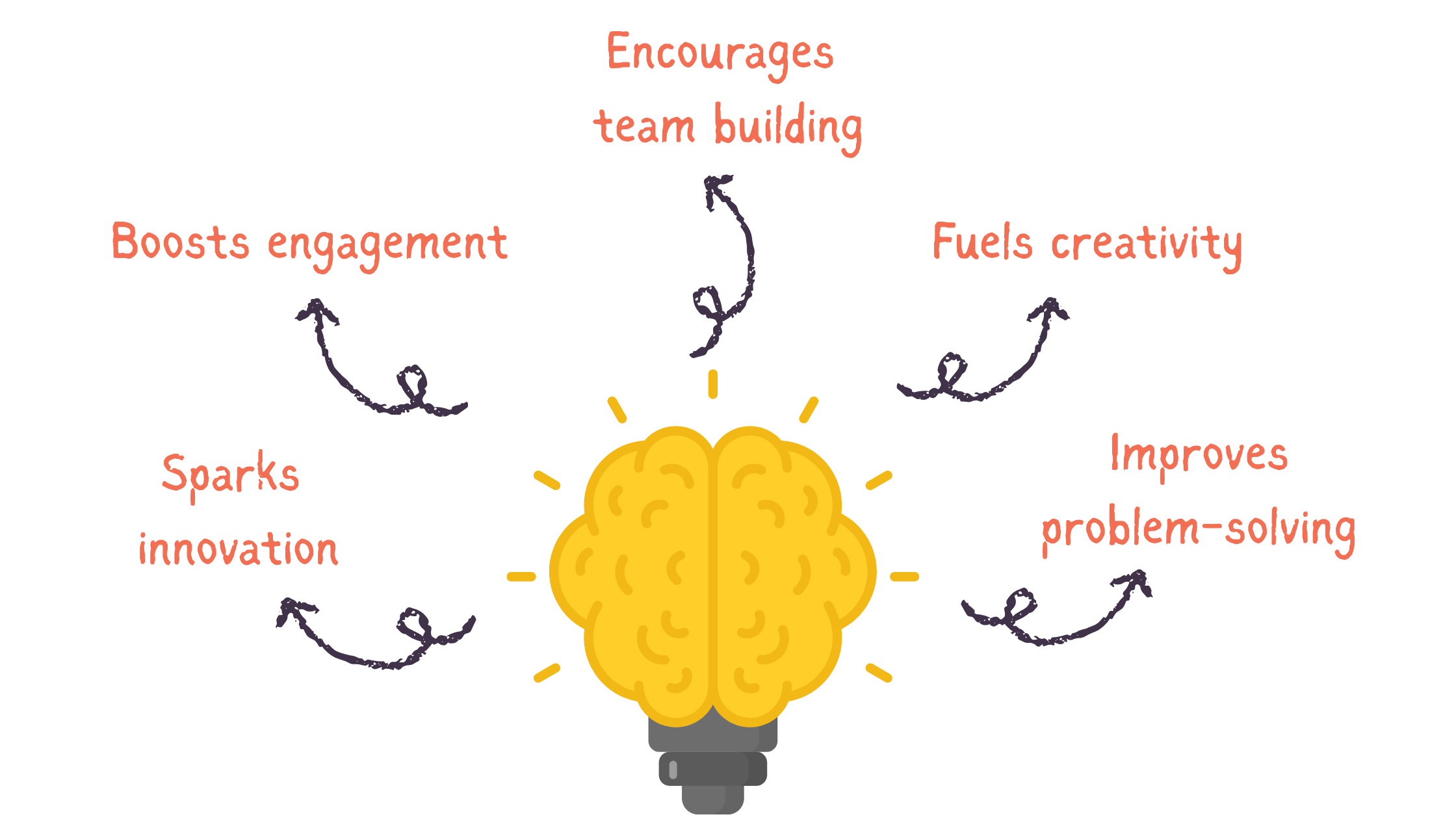
Encourages team building
Brainstorming brings people together to share ideas and work toward common goals. It helps build trust and strengthens collaboration within the team. This improves the overall dynamics of the team.
Fuels creativity
Sharing ideas openly sparks fresh thinking and new perspectives. One idea often inspires another, helping to break mental blocks. This leads to more innovative and unexpected solutions.
Improves problem-solving
Different viewpoints allow teams to explore challenges from many angles. Brainstorming encourages thorough discussion before deciding on the best course of action. The result is stronger, more effective solutions.
Boosts engagement
When everyone has a chance to contribute, people feel valued and involved. This sense of ownership increases motivation and focus. Active participation also leads to higher commitment to the outcomes.
Sparks innovation
Brainstorming creates a space for bold and unconventional ideas. It encourages thinking beyond the obvious to find breakthrough solutions. Innovation grows when participants feel free to explore without limits.
Role of brainstorming across multiple teams
Brainstorming plays a vital role and is used widely across different teams in an organization, especially in today's hybrid work environments. It makes it easier for teams to come together, ideate, and innovate no matter where they are. Here's how different teams use brainstorming
Marketing teams collaborate to generate creative campaign ideas, plan content strategies, and craft compelling messaging. They visualize customer journeys and analyze competitors side-by-side.
Product development teams use brainstorming to prioritize features, design user experiences, and solve technical challenges. This lets cross-functional members from designers to engineers contribute seamlessly in real time.
Creative teams like writers, content creators, and designers share mood boards, draft concepts, and provide instant feedback that can spark innovation.
Product managers plan workflows, identify bottlenecks, and brainstorm process improvements collaboratively to keep teams aligned and efficient.
Entrepreneurs and small teams map business ideas, marketing plans, and pitches, thereby organizing thoughts visually to help them make faster decisions.
Wrapping up
The process doesn't just end with brainstorming. What truly matters is how you follow up afterwards. Once the ideas are on the table, it is important to review and identify the ones with the most potential. Shape them, refine them, and assign them to individuals so everyone is aware of their responsibilities. Don't just stop there; follow up continuously and track the progress. When ideas are nurtured beyond the meeting room, they become meaningful outcomes. That's how brainstorming transforms from just a conversation into a real change.
Happy collaborating!


